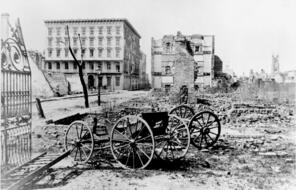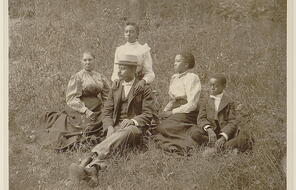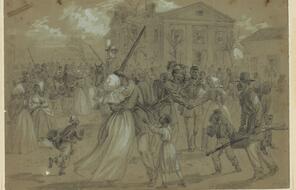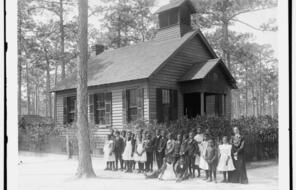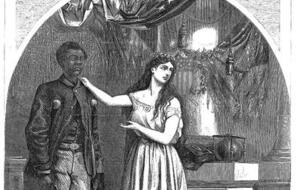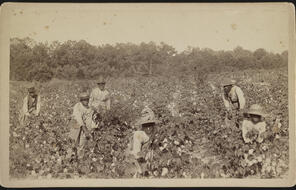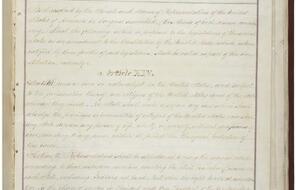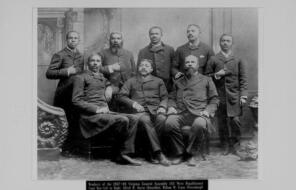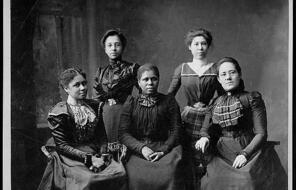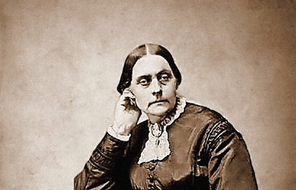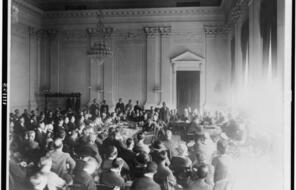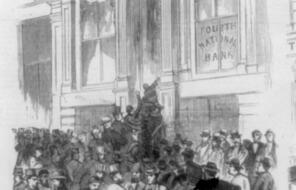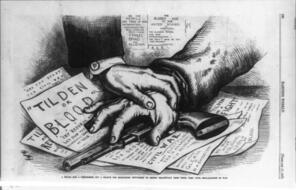The impact of the death, destruction, and upheaval brought about by the Civil War on the Americans who lived through it cannot be overstated. While your class may have explored this impact while learning about the war, it is important to establish the war’s upheaval throughout the country as the backdrop to the challenges and conflicts of Reconstruction. While the nation prepared to confront the enormous political, economic, and social challenges of Reconstruction, many Americans were simultaneously mourning the loss of loved ones (many of whose bodies were not able to be recovered for proper burial) and yearning to restore a sense of safety, stability, and belonging in their daily lives. While the devastation of the Civil War is difficult to capture, this lesson includes a series of resources and documents that can help students get a sense of the range and depth of emotions felt by Americans from both the North and South.
Reflecting on the War’s Impact
The statistics quoted in this lesson about the war’s devastation present a reality that is difficult for contemporary Americans to grasp. Two and a half percent of the population of the United States died in the Civil War. Today, 2.5% of the country’s population is roughly 7 million people. By comparison, about 1 million Americans—0.3% of the population—died from COVID-19 between 2020 and May 2022.
It was barely possible for Americans in 1865 to go untouched by the loss of at least one, if not many, friends and loved ones who died in the war, especially in the South, where historians estimate that one in five military-eligible men died. In addition, it was not yet customary for governments to tally, identify, and properly bury those who died in war. Therefore, a large proportion of American families who lost loved ones in the Civil War never knew when or where their loved ones died, and they were not able to recover their remains for funeral and burial ceremonies.
The war’s upheaval included more than widespread death. The military victory of the Union left large swaths of the South in ruins. Historian Heather Cox Richardson writes that by the end of the war, two-thirds of Southern wealth had been destroyed. Two-fifths of livestock, half the farm machinery, most factories, and nearly all railroads in the South had been destroyed
. Depleted resources left a significant part of the population in the former Confederacy suffering from hunger.
At the same time, more than 4 million African Americans had just been emancipated from slavery, a sudden and drastic transformation of American society for whites and Blacks, Southerners and Northerners alike. At the end of the Civil War, Americans everywhere were mourning significant losses, enduring significant hardship, and adapting to unfathomable social change. Under these circumstances, they yearned to know that their loved ones did not die in vain. The meaning and the consequences of the war, therefore, were enormously important to those suffering losses as well as those trying to build a new life in freedom.
It is in this context that the diary entries included in this lesson were written. A staunch opponent of slavery, Caroline Barrett White writes triumphantly of Confederate General Robert E. Lee’s surrender at Appomattox and hails a new era of liberty “every where, & to all people, of every color.” At her home in Massachusetts, White did not experience up close the destruction and upheaval that Kate Stone did. Exiled to Texas from her Louisiana plantation, Stone writes that “our Confederacy will be a Nation no longer, but we will be slaves, yes slaves, of the Yankee Government.” White Southern women such as Stone frequently wrote about the disruption in their households brought on by Emancipation and the war’s end. They struggled to maintain the trappings of status and privilege as many of their former slaves availed themselves of their newfound freedom to simply leave.
Historian Thavolia Glymph explains the changes confronting former mistresses such as Stone: “No longer legally bound to the white household after the Civil War, former slaves set out to demolish the residue of that attachment. . . . Former mistresses struggled to get along with free laborers whose ‘loyalty’ they could no longer even pretend to command.” Still, some Southerners rejected these changes in power and hierarchy and reaffirmed their belief that they had the right to control the lives of African Americans.
Indeed, the devastation of the Civil War and the revolutionary ideas behind Emancipation and Radical Reconstruction changed the United States and the lives, circumstances, and opportunities of nearly every American. In this lesson, students will uncover another perspective on the impact of the end of the war by exploring a letter from former slave Jourdon Anderson. Anderson’s letter is a sarcastic response to a request from his former master to return to work for him.
The diary entries, coupled with Anderson’s letter, offer an indication of the depth of emotion felt in both the North and South as the war ended. Is it possible to reconcile the hearts and minds of individuals such as Jourdon Anderson and Caroline White with those of Kate Stone?
The Challenge of Reuniting the Nation
These three viewpoints also foreshadow the political difficulty of envisioning the future of a nation in which both the North and South were to be members and African Americans were to be citizens, voters, and officeholders. In 1863, Lincoln offered the first attempt at a Reconstruction policy. A wartime measure designed to provide Unionist footholds in Confederate states, his “Ten-Percent Plan” readmitted Confederate states to the Union when 10 percent of the state’s citizens pledged loyalty and accepted Emancipation. Lincoln’s plan gave no voice to former slaves in shaping the new Southern governments.
While historian Eric Foner asserts that it would be a mistake to assume that Lincoln would have continued his wartime Reconstruction plan after the war, Republicans in Congress at the time criticized the plan as too lenient. In 1864, Congress passed the Wade-Davis Bill, which required a majority of citizens of each state to pledge loyalty to the Union and guaranteed equality before the law for Black Southerners. While the bill was “pocket vetoed” by Lincoln, it was a precursor of Radical Republican efforts to remake Southern society, rather than reunite the nation under the old social order, in the years to come
.
As the debate over Reconstruction began in the North, however, the war raged on until April 1865, and in the face of mass desertion from the Confederate army and widespread hunger, Confederate leaders remained as defiant as ever. In February 1865, Confederate President Jefferson Davis declared: “If the power of the enemy were ten times greater, and ours ten times less than it is, there are still some rights of which they could not dispossess us; the right to maintain our personal honor, and the right to fill an honorable grave.”
It is in this context that Abraham Lincoln delivered his Second Inaugural Address, one of the most famous and important speeches in American history. In the address, Lincoln recognizes the end of slavery as fact (the Thirteenth Amendment was well on the way to ratification) and moves beyond this, emphasizing what is common among Americans from the North and South and proposing a reconciliation that would take place “with malice toward none, with charity for all.” Little more than a month after delivering this address, Lincoln was assassinated in Washington, and Andrew Johnson took center stage in the politics of Reconstruction.





